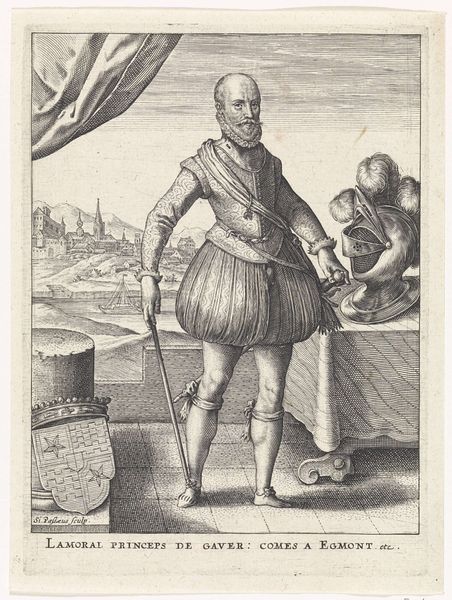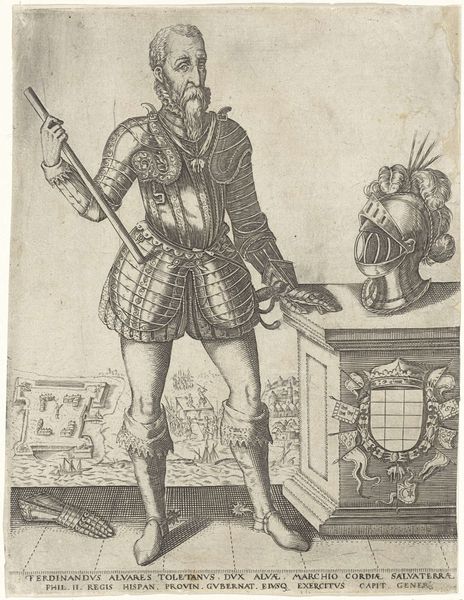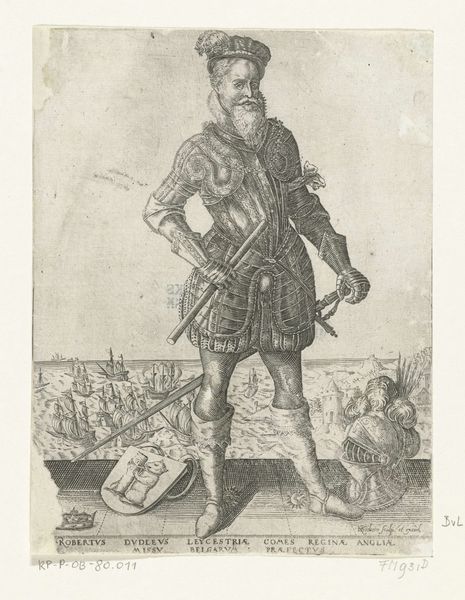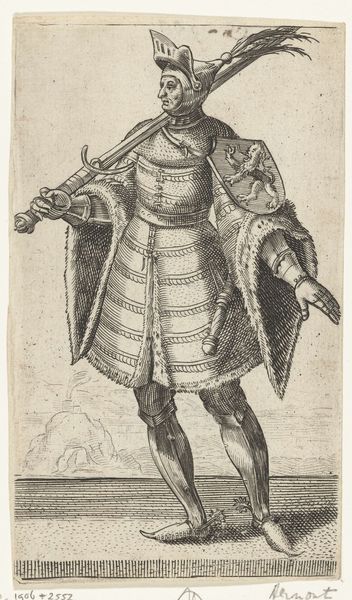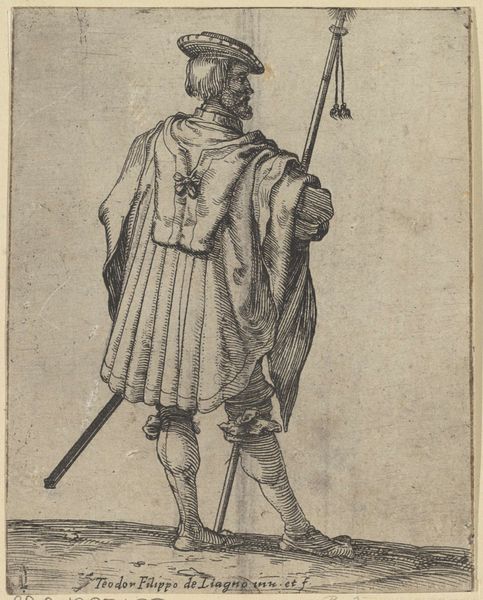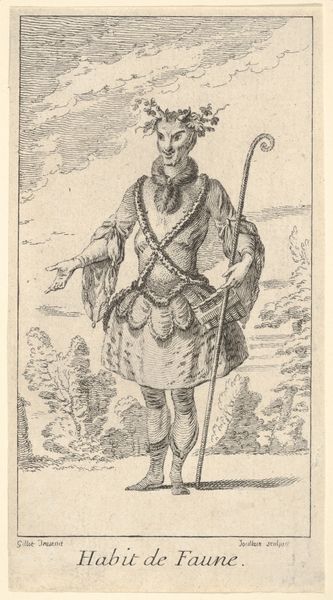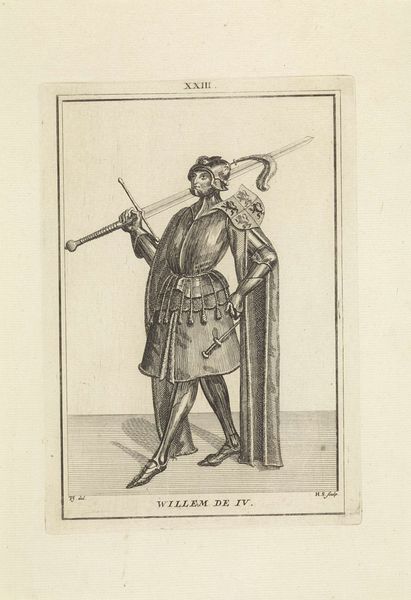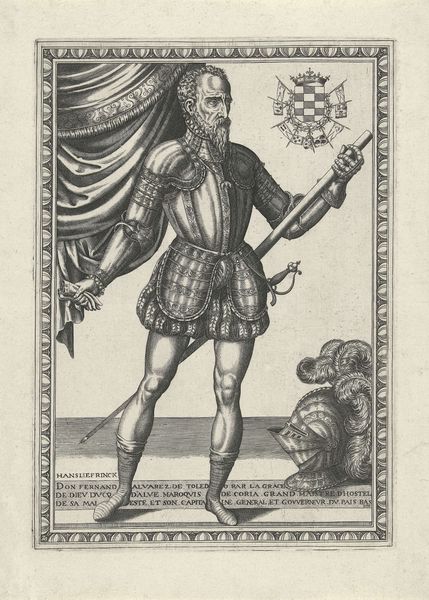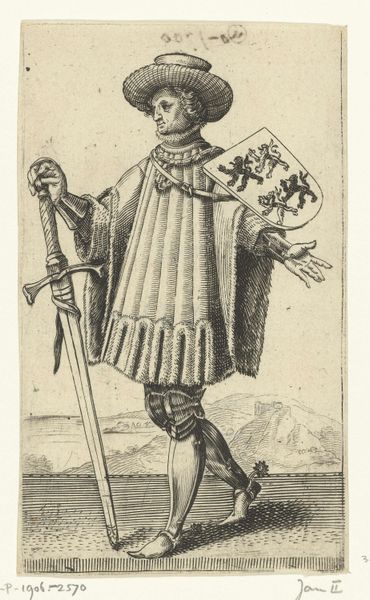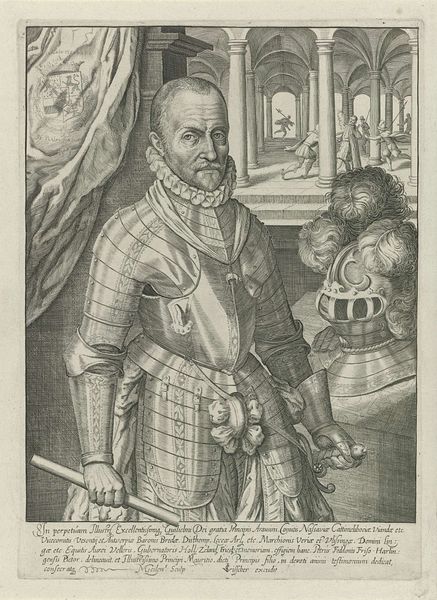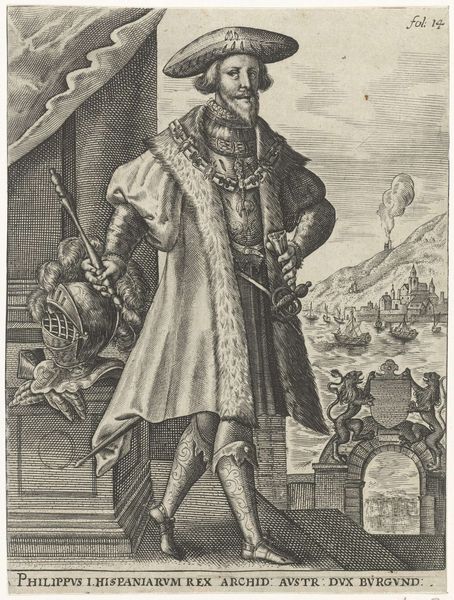
metal, engraving
#
portrait
#
baroque
#
dutch-golden-age
#
metal
#
old engraving style
#
caricature
#
line
#
engraving
Dimensions: height 190 mm, width 145 mm
Copyright: Rijks Museum: Open Domain
Curator: I'm drawn to the almost eerie stillness of this engraving. What strikes you immediately? Editor: Definitely a powerful vibe. The contrast of textures grabs you – cold, hard metal armour juxtaposed with the soft drape of fabric. There's an interesting play between vulnerability and power there. Curator: Indeed. This is a piece titled "Portret van Philips van Montmorency, graaf van Horne," made between 1604 and 1647 by Simon van de Passe, currently residing here at the Rijksmuseum. It’s an engraving on metal, typical of the period. Looking closer, one notices how line becomes crucial here, the main compositional element— it's practically all lines and marks. Editor: Engravings always fascinate me. It's metal, right? I always picture the engraver hunched over their plate, painstakingly incising each line by hand. Makes you consider the physical effort and skill inherent in producing this likeness, so different from our age. Do you get the impression that it captures him "in action", or does he seems very formal, maybe stuck-up? Curator: Certainly formal! Remember that in the 17th century portraits weren't snapshots. They projected a certain image, upholding social hierarchy. In this Dutch Golden Age piece, even the material reflects status - consider the cost and labour required for metal engravings like these versus a quickly-made sketch. They functioned as almost official declarations of identity and nobility, circulating an approved likeness to build political narratives around an individual. Editor: Makes you wonder what Van de Passe, the engraver, truly thought of Montmorency. There is something ever-so-slightly sardonic in the final rendering; as if subtly satirizing his pomp. Am I totally off? I have to wonder if some little details can be read critically. Curator: Perhaps you're not totally wrong, but consider that we bring our own cultural biases and frameworks into the game as beholders. But I appreciate you asking those important questions because they require us to reconsider whose history we are viewing here, and how this material piece informs this question. Editor: A fair call, definitely. Makes one aware of all the historical weight and social commentary crammed into what seems like a static image! Curator: Indeed, from the metal plate to our 21st century gaze, everything becomes contextualized through time, labour and perspective.
Comments
No comments
Be the first to comment and join the conversation on the ultimate creative platform.
